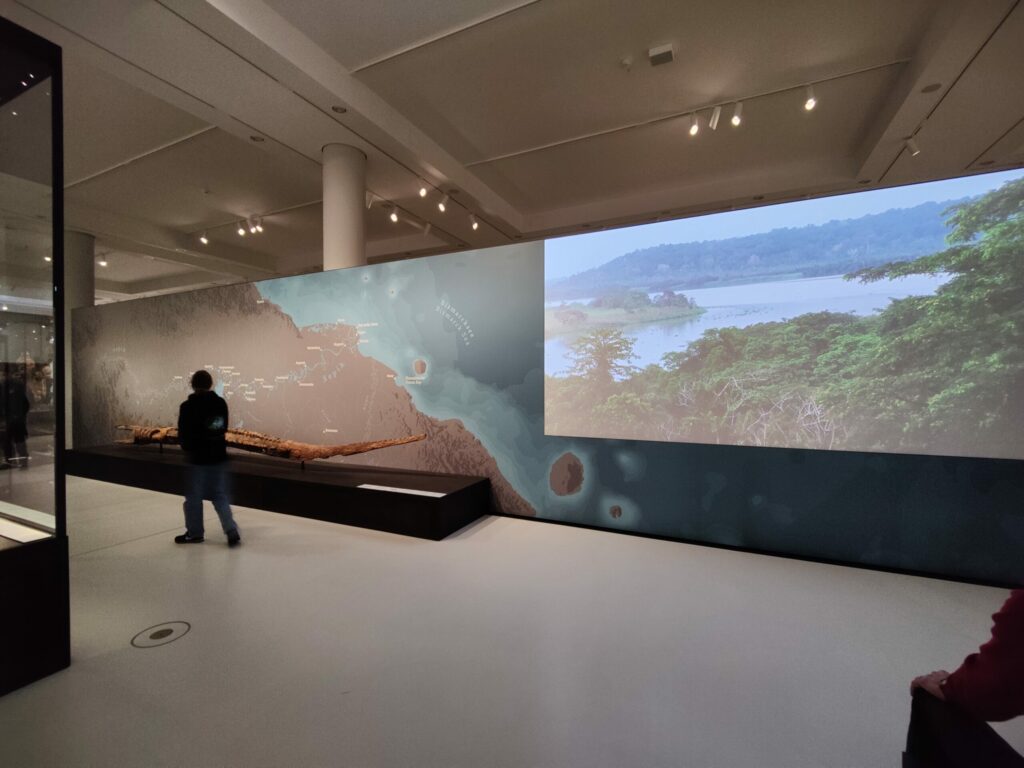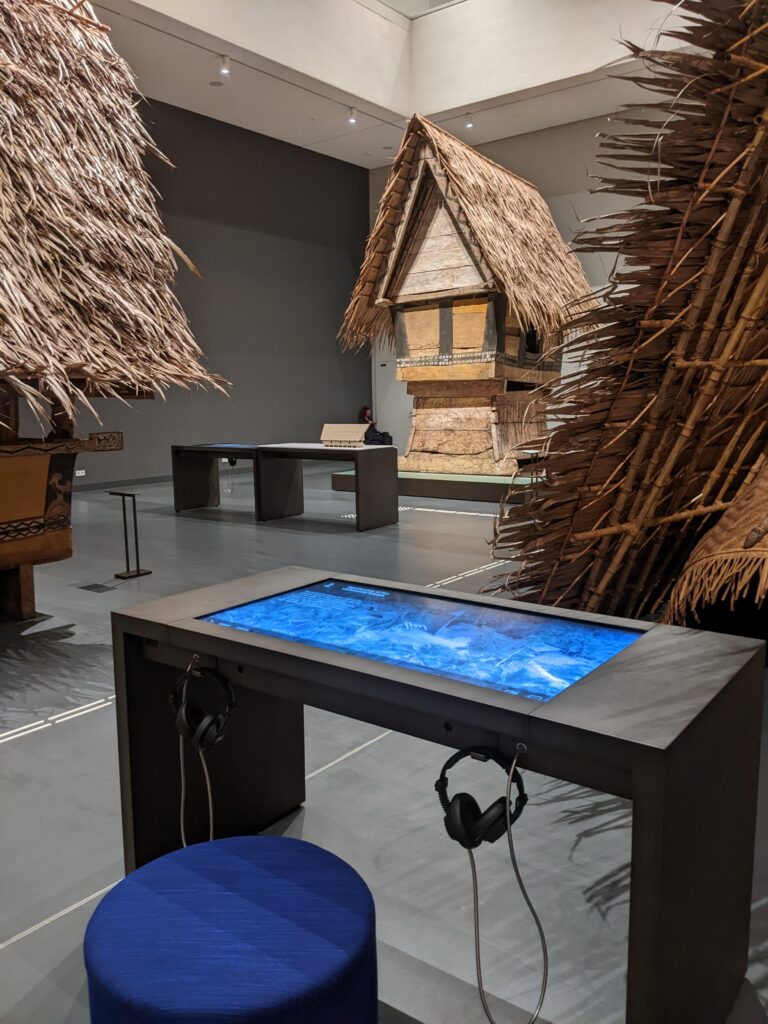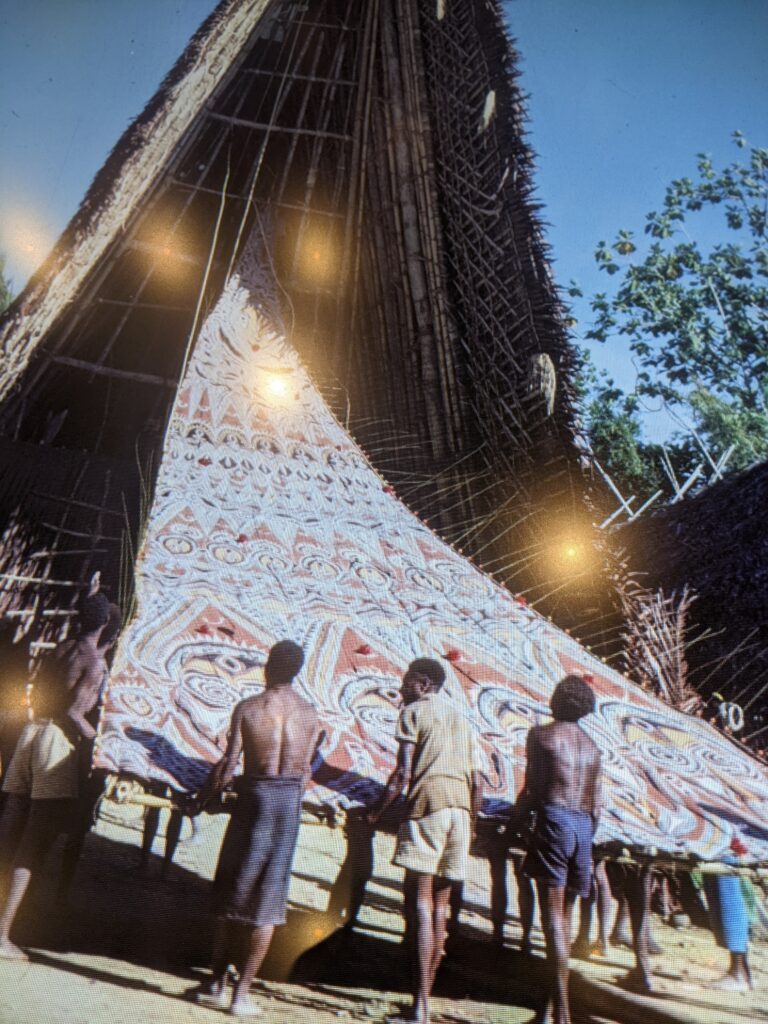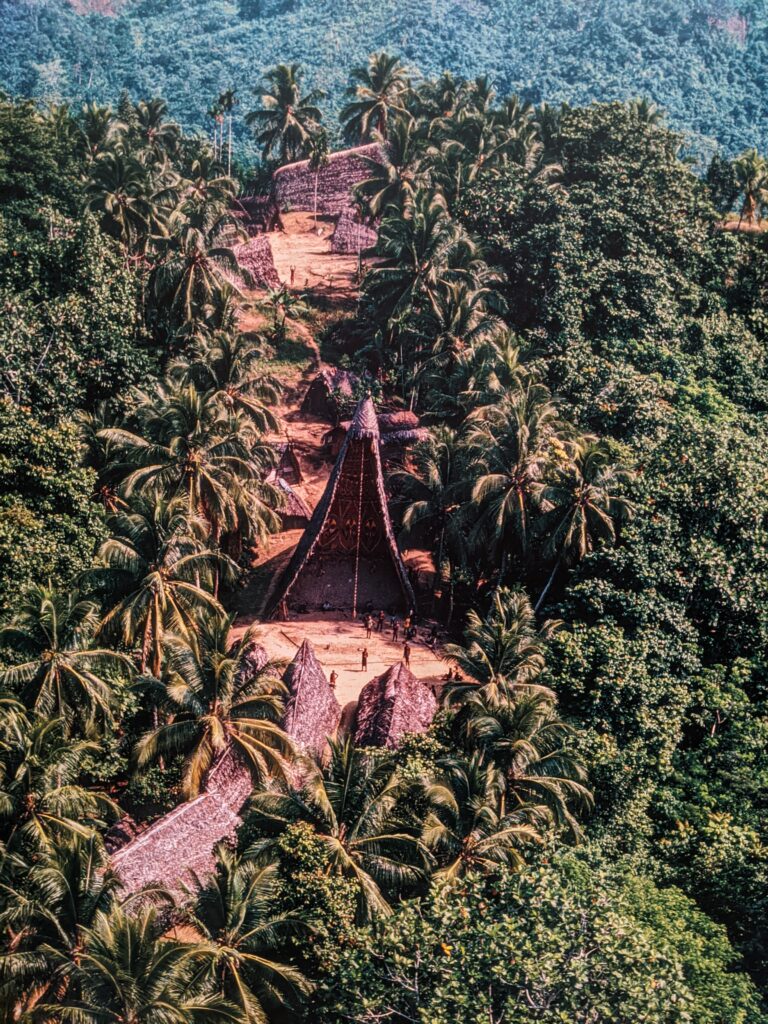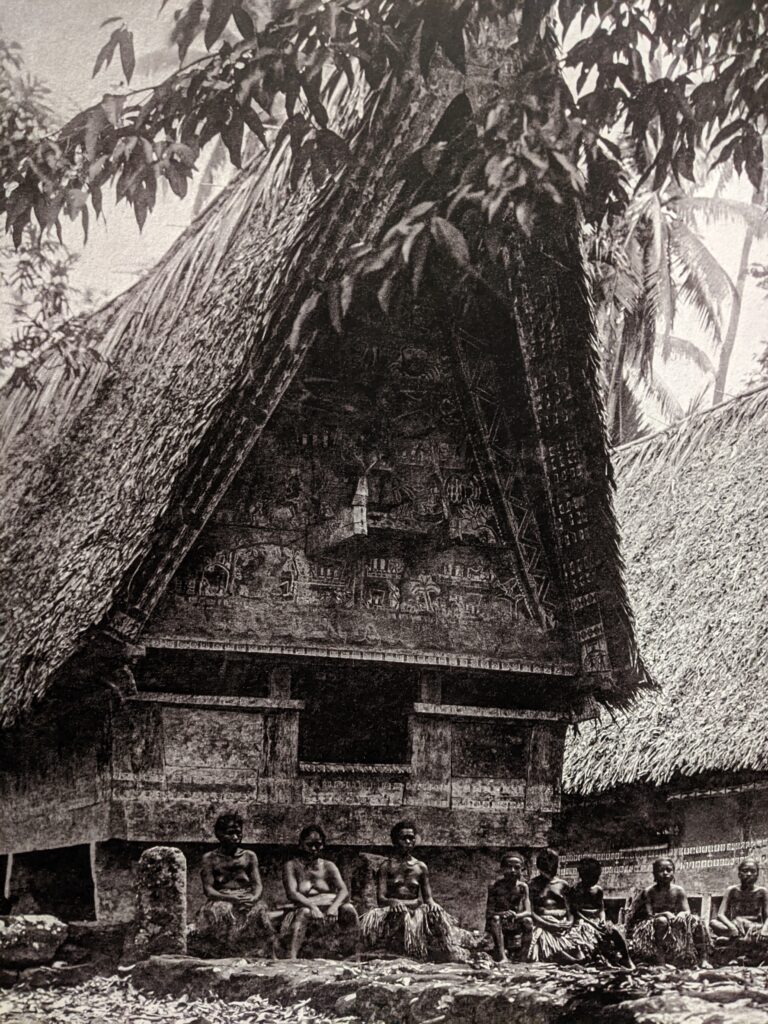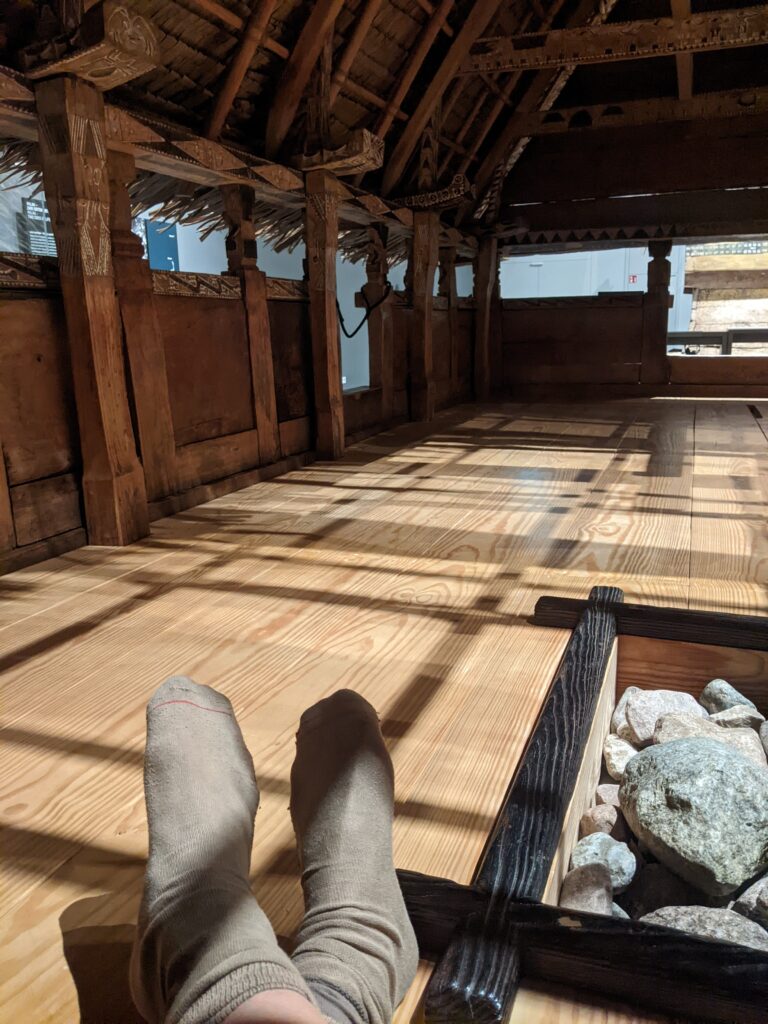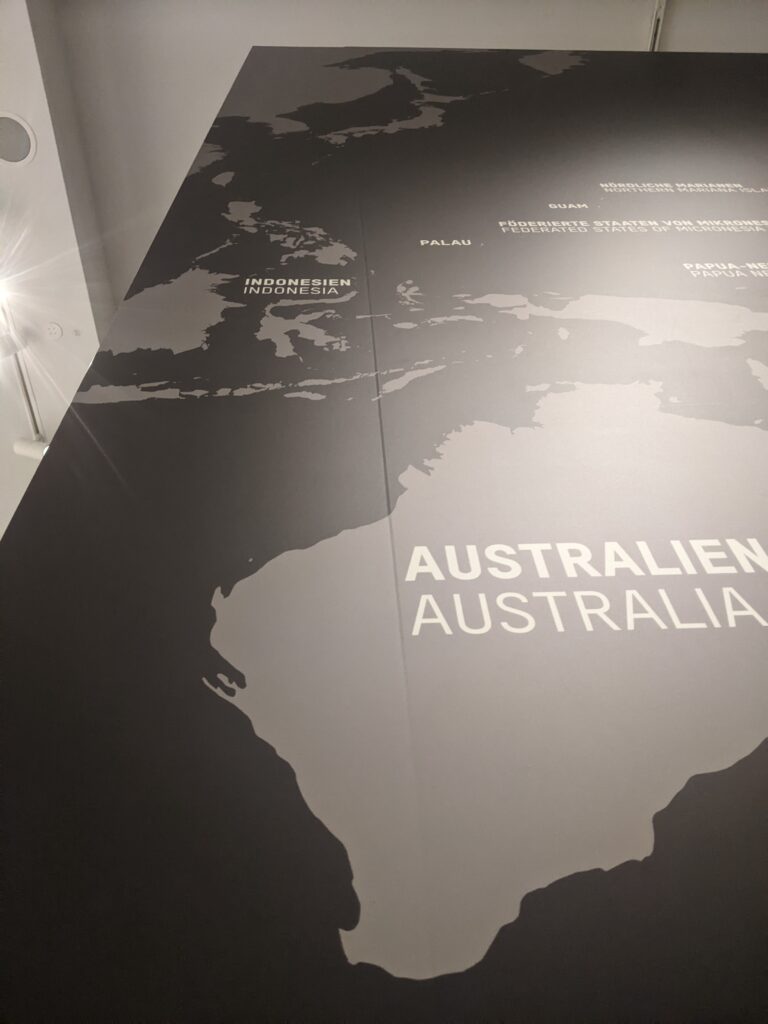This afternoon I was at the Humbolt Forum, and spend some time in the section on Melanesia and Micronesia. A wonderful experience has been designed by the museums curators, where you are taken by large projected video up the Sepik river on the north coast of Papua New Guinea, one of the great rivers of the world, still full of wildness and grandeur. Then you walk down a stair case and stand in front of a traditional men’s house and its triumphant gable. These houses up to 25 metres in situ, and this was smaller but was still extremely large so that it took up two or three floors of space. I stood in front of a flat large touch screen and went through old photos of these places. And what came into my mind, but the tympanum (the section above a door lintel) with its carvings and images of old men representing saints and so on above the main entrance to English and French cathedrals… Strangely this came into my mind… As I looked up at the row of large stylised faces of men looking down at me from the gabled front of this Sepik River men’s house. Humans repeating motifs and patterns in the world over thousand of years and, deserts and oceans and forests away.
These houses were for men to be initiated into the world of the spirits and the ancestors. As I spent more time learning about this Sepik river architecture, about how these houses are built, and what they were for, I remembered the ancient and enclosed world of PNG traditional culture that I had learned about from watching the famous triology of documentaries by Australians Bob Connolly and Robin Anderson, from reading Throwim Way Leg by Tim Flannery, and other sources. It is a cultural cosmos, complete and elaborate and proud, to rival any other cultural cosmos in the world. Unlike English aristocrats who emulated ancient Rome in their architecture and culture, these men and women did not know about the outside world until the twentieth century. They were not ‘remote’, they were not ‘on the periphery of world affairs’, they were not ‘far away from the centres of power’, etc. They were at the centre of their cultural and natural universe. Living cultures thousands of years old full of rituals, architecture, art, rites of passages, languages, knowledge of the plants and animals and weather of their world.
Being here in this section of the Humbolt Forum made me want to take a long canoe with an outboard up the Sepik. It gave me feel refreshed to remember that peoples and cultures close to my home in Perth, W.A. have until recent decades, felt secure in their place in the cosmos, and were planted in a dense culture that showed no deference to Greek democracy, Shakespearean drama, Claudean landscapes, industrial revolutions, or European monarchs. That existed proudly independently and confidently, naked and strong and ingenious amongst their yams and their pigs and their forests full of vines and mountains and wide brown rivers.
After immersing myself for half an hour in the architectural traditions of this culture along the Sepik River, and standing under the eves of one of its towering products, high above me, I moved on. I walked to a bai, a traditional house for ceremonies, made in Palau, in Micronesia. Yes, they have an actual bai here in the Humbolt Forum in Berlin. It was made in the first decade of the twentieth century for a German ethnologist by the locals over three months, then shipped to Berlin. And so I took my shoes off and stepped inside the raised platform of the bai, under its thatched roof. The beams above me were carved with figures and animals, each telling a different story. I sat next to the stones of the central hearth and pressed a button, and a disembodied voice from the rafters above me told me the stories of the people. As each story was recounted I could look up and find it represented in carvings on different beams. This made me think of the way the story of the bible is carved into wood and stone in English churches, from medieval times when most people were illiterate and stories were best represented that way. It was the same here in this old Palauan culture. What a wonderful experience.
But it felt strange that I had come all the way to Berlin to have this experience, when I live in a country that is, comparatively, just next door to PNG and Palua. Why don’t we tell these stories in Australia, to become more acquainted with our geographical neighbourhood more intimately? I also reflected on how all of these rituals and ceremonies on the Sepik River had their swan song in the 1980s, and since then the triumph of meddling Christian missionaries have pretty much ended it all. What continues is now done mainly for the tourists, what little come to this often violent area of the planet. What a horrible thing to usher in the demise of cultures many thousand of years old through bigoted proselytising of your own holy book. It is bad enough when you meet, as I have, people working in mining in PNG who don’t seem to care much about the people whose rivers they are polluting, but worse when people actively dissuade others from following their own cultural inclinations because of their own religious self-righteousness.
Still, thank you Humbolt Forum. You have widened my field of vision.
